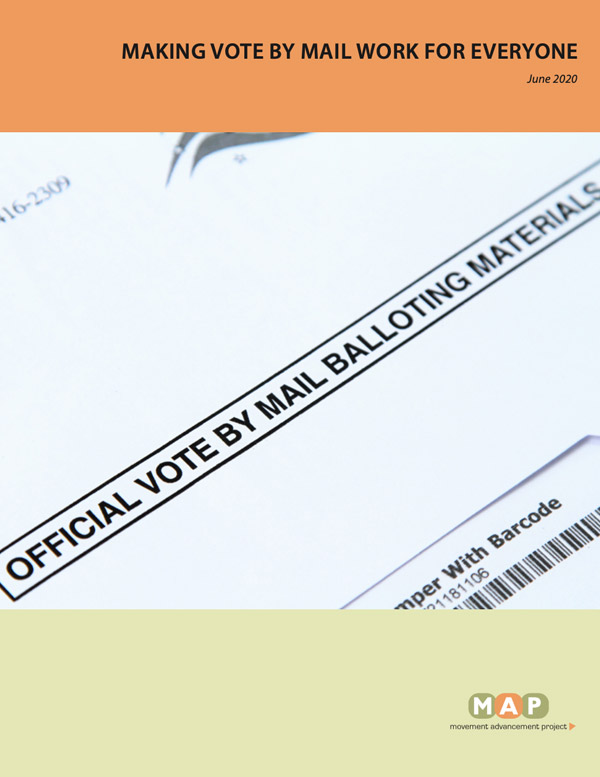Casting a ballot by mail is not a new way to vote for many Americans, but given the likely resurgence of the COVID-19 pandemic this fall, many states are giving renewed attention to vote by mail options as safe and secure ways to participate in the November primary election. The Movement Advancement Project released a new report,
Making Vote By Mail Work for Everyone, which explores vote by mail policies across the states and outlines how states can implement vote by mail securely—and in ways that work for all voters.
Making Vote By Mail Work for Everyone provides an overview of how vote by mail works, how it can be implemented securely, and why the option is an important advancement to safeguard the accessibility and integrity of U.S. elections. States can create a robust election system that gives all voters the option to vote by mail, in tandem with protecting the ability to vote for people who use or require in-person options, Native American voters living in remote areas, voters who do not have a permanent home address, and voters with disabilities.
The report examines how states have overcome challenges with vote by mail and outlines comprehensive recommendations to ensure robust voting options that work for all communities. Particularly during a pandemic, giving eligible voters the option to vote by mail will ease crowds and waiting time at voting centers. This helps ensure that people with disabilities—as well as older voters and voters who are immunocompromised or have chronic health conductions—can still vote while avoiding crowds that could put their health, and potentially the health of others, at risk.
Making Vote By Mail Work for Everyone (PDF)Download
Recommended citation:
Movement Advancement Project. June 2020.
Making Vote By Mail Work for Everyone.
www.mapresearch.org/vote-by-mail. [Date of access].


